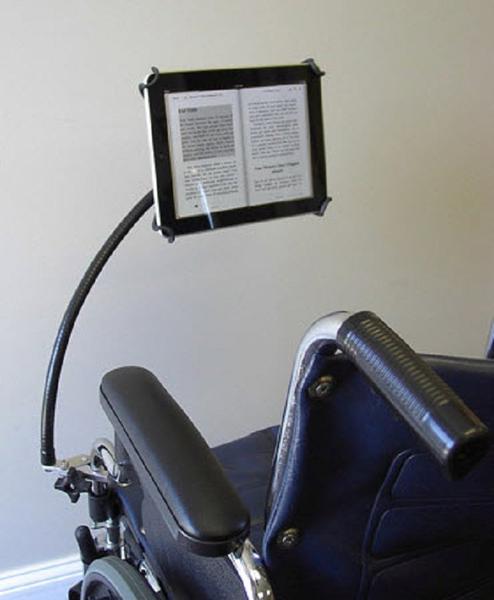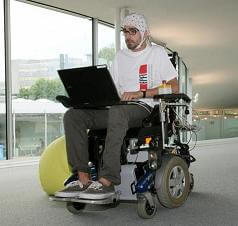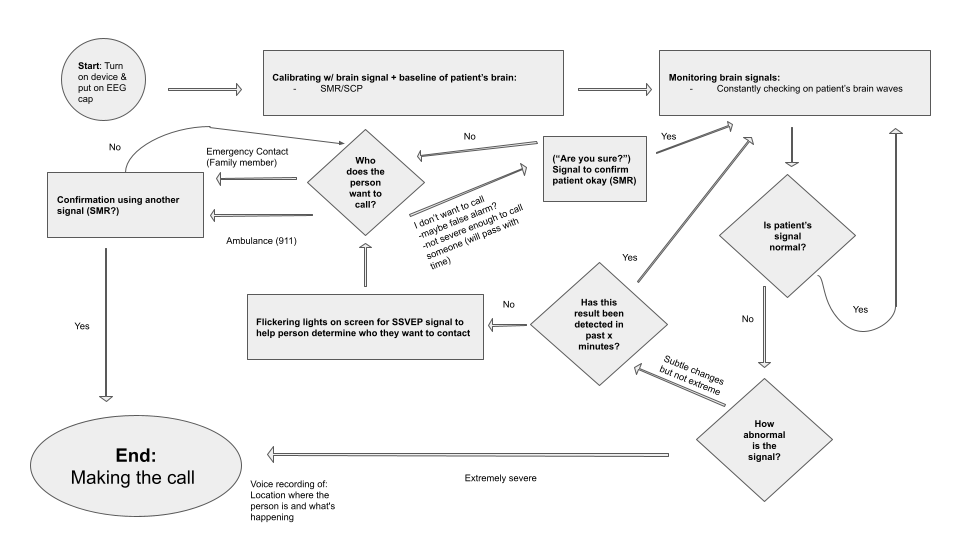Detextroke: A Stroke Detecting Device
To finalize my minor in Biomedical Engineering, I completed a Sensory Motor Systems course covering a quantitative and systems approach to understanding the nervous and musculoskeletal systems. The format of learning these approaches was through traditional lectures as well as in problem-based learning (PBL) assignments to address specific physiological problems with a biomedical solution.
The first PBL assignment was in the form of a group research paper on the in-depth analysis of electroencephalogram-based brain-computer interfaces. I was in charge of writing the introduction, discussing each signal type, and summarize the concluding remarks. After finishing my sections, I managed the final edits and revisions to make sure the paper is uniform.
Following this paper, my group’s next PBL assignment was to present a theoretical EEG-based BCI system to help disabled patients. We planned to focus on patients who are elderly and disabled with amyotrophic lateral sclerosis (ALS), or with spinal cord injuries who can control an emergency device without using mechanical linkages in the body.


My job was to form the flow chart of how the patients would interact with the device and the response of the signals. The chart shown below was our first draft to give to our TA for feedback.
Overall, my initial flowchart was a good start, but my TA wanted me to add more detail within the commands and what is being measured for each signal. Working on these suggestions, my team and I then planned out the slides and who will present which topic.
Addressing my TA's concerns, I was able to add more detail within the chart to give a better understanding of the design intentions. The following slides show the model of the device and what the screen will look like at each command.

The device will record the delta, alpha, and beta frequency bands at the beginning using EEG to detect changes when a patient is having a stroke. These changes will be defined as abnormalities of the frequency bands and do not include common EEG features. From this pre-programmed setting, the device will be tuned to recognize only stroke classified frequencies. The first interaction between the patient and the device is if there are subtle abnormalities detected similar to stroke patterns and has been over the 5-minute reading threshold when EEG signals are produced.

Using SMR, the patient will have to imagine movement in their left and right arm which provokes suppression at 8-20 Hz. Without this detection, the command is not completed and will automatically call 911 with an automated voice message relaying their name, issue, and location.


The next interaction is if their movement was detected, they can now choose a contact to be safe, or cancel the action altogether using SSVEP. Using their device, they will be supplied with 4 options on their screen, and depending on which option they choose, a unique frequency related to their choice is detected. This command is repeated but now using only 2 options and if the patient confirms to make a call, then it will be made, otherwise, they can quit.

